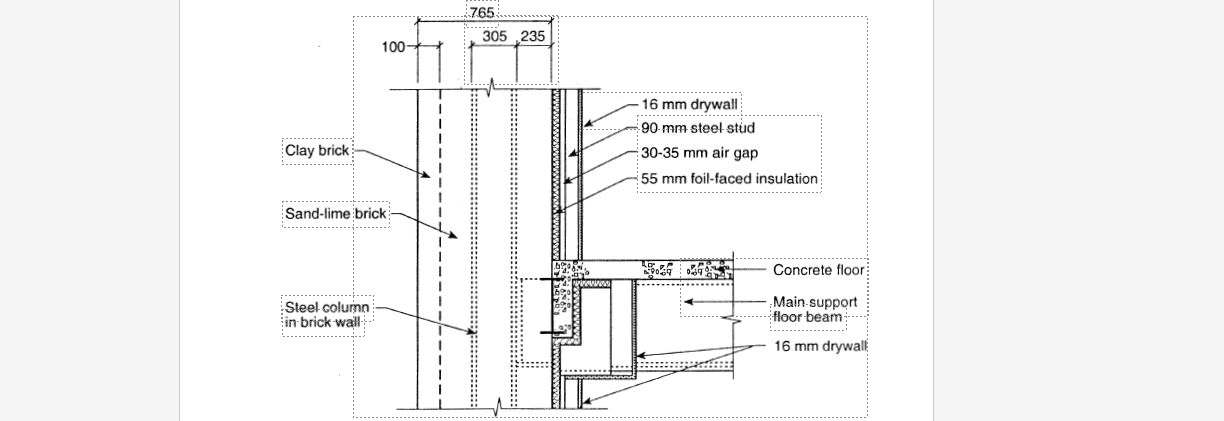Institute for Research in Construction, National Research Council, Ottawa KIA 0R6
C J Shirtliffe
Shirtliffe & Associates, Box 9515, Station T, Ottawa KIG 3Y2
ABSTRACT
A four-storey warehouse in Winnipeg, built in 1911, was converted in 1993 for use as offices and laboratories. The exterior solid masonry walls had insulation added to the inside surface to control heat flow and to improve thermal comfort. The insulation included an integrated aluminum foil facing to control vapour diffusion through the assembly.
Field monitoring of two wall sections (one insulated, the other uninsulated) was canrried out in order to understand better the effect of the addition of thermal insulation and vapour barrier on the inside of solid masonry walls on the hygrothermal performance of the assemblies. Sensors were installed in the two wall sections and were monitored for several years.
The measurements determined:
-temperature differences across the wall
-effect of thermal bridging at floor level
-thermal resistance of wall components
-air pressure difference across the wall
-wetting by rain of the exterior wall
-moisture changes in the wall and surface condensation
This paper presents results from the monitoring, including a comparison of the performance of the insulated to the uninsulated wall sections.
6518.pdf



